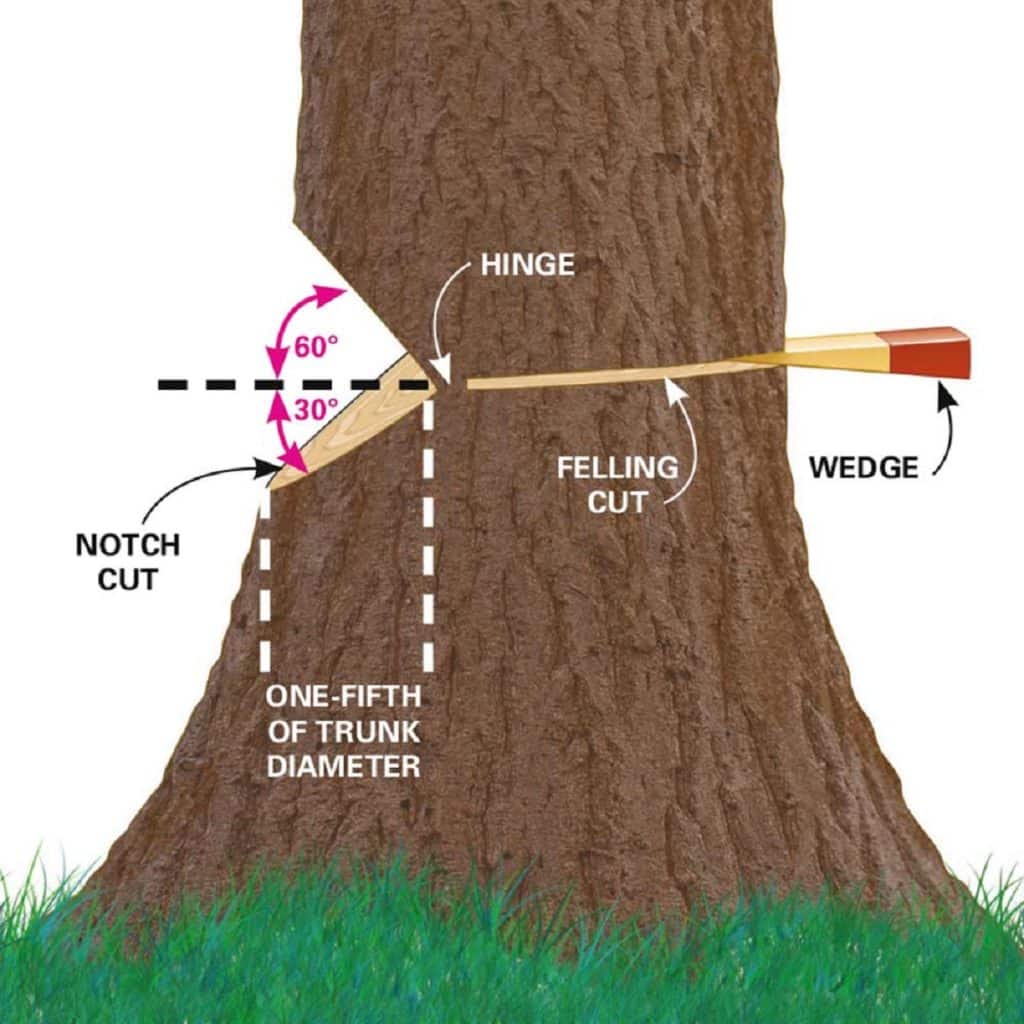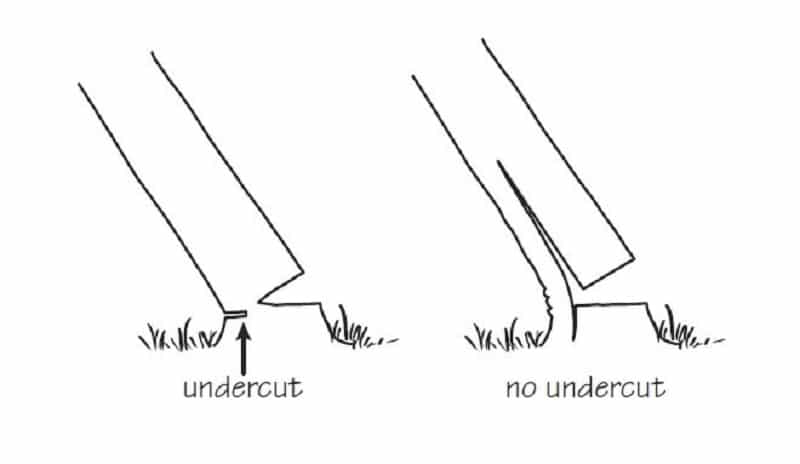If you are removing a tree because it has fallen, become unsightly, or gotten ill you need to prepare yourself first. Check with any neighbors you might share the tree with and be sure removal doesn’t interfere with wires or underground pipes. If you have a large tree and are not familiar with the mechanical equipment or guide ropes needed you might want to call a professional tree remover to help. Safety for yourself and others should be your number one concern.
If you have utility lines around the tree call the utility company before cutting. This will ensure you do not cause any interference or disruption in service due to branches or other things falling and breaking the lines. Also, live wires pose a danger to you and everyone in the immediate area. If you have a downed wire call 911 and the utility service company after you have gotten to a safe location.
Before Removal
Ensure there are no obstacles in the way of falling debris. Move your car, motorcycles, flowerpots, and in some cases fence so they do not get damaged. You are most likely going to destroy the surrounding ground by removing the roots so plan accordingly if you have flower beds or other landscaping.
Look at the tree from a distance and from many different angles. Is the tree leaning more to one side? Maybe your lawn is on a slight hill? Take into consideration which way this tree is going to fall once you start cutting.
Check the tree for hazards. Loose branches that could fall unawares, or other debris that can harm you if it falls.
Make sure to check if the tree is rotten or hollow. This can cause the tree to become unpredictable when cutting it down. You cannot see the weak points of the tree and therefore it could fall in a different direction than your original intentions while cutting. Call a professional in this situation. Do not cut a rotten or hollow tree yourself.
Establish 2-3 different paths that you can use to get away from the tree if it falls. Select paths on multiple sides of the tree. Remember to expect the unexpected and protect yourself.
Wear proper safety gear before beginning any cut.
Get the equipment needed for your task. Hand saws for smaller trees or chainsaws for large trees. Now may a good time to watch a video on chainsaw safety by Echo USA. Just to brush up. 😉
Removing the Tree
The first cut you want to make is called an undercut. When you determine which direction you want your tree to fall make a v-shaped 90-degree cut into the trunk of the tree at about a ¼ of the depth of the tree.

Next, your back cut will be made approximately 2 inches higher than your undercut and on the opposite side. Remember to always make this cut higher than the undercut and never through the undercut or you will cause serious injury to yourself and others because you will lose all control of the tree at that point. When you make your back cut the tree will begin to fall.

When the tree starts to fall turn off any cutting equipment you were using and head towards one of your escape paths that were predetermined earlier. Do not stand by the tree as it is falling; get away as fast and safely as possible.
Now that your tree has fallen you can start at the bottom and remove the limbs and branches one at a time.
After the branches are removed you have a bare log. Cut this into sections for easy carrying and handling.
For additional information, you can watch a video of how to remove a tree by Stihl USA . This video shows your tree removal with a chain saw and safety equipment, as well as tips on how to determine which way your tree is going to fall.



